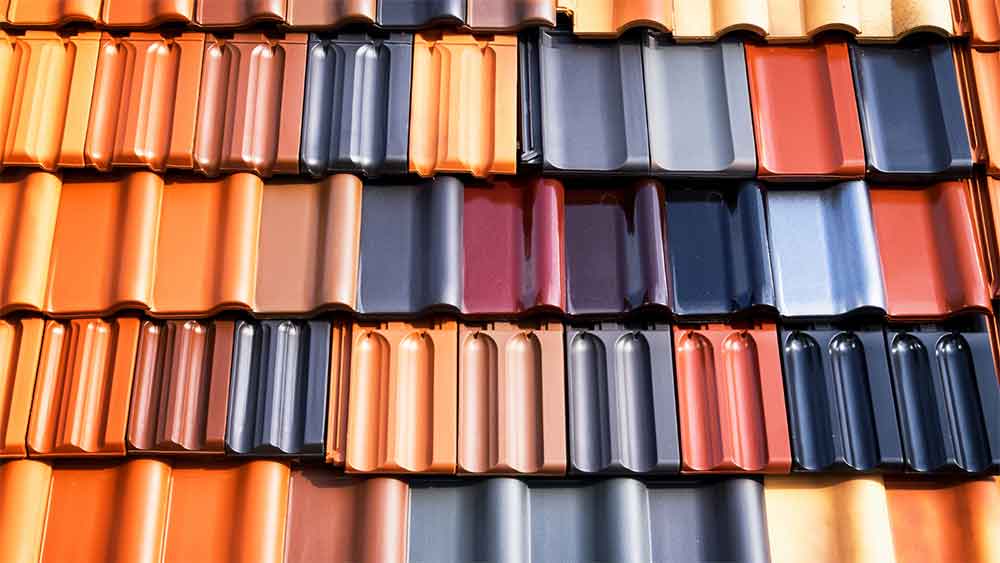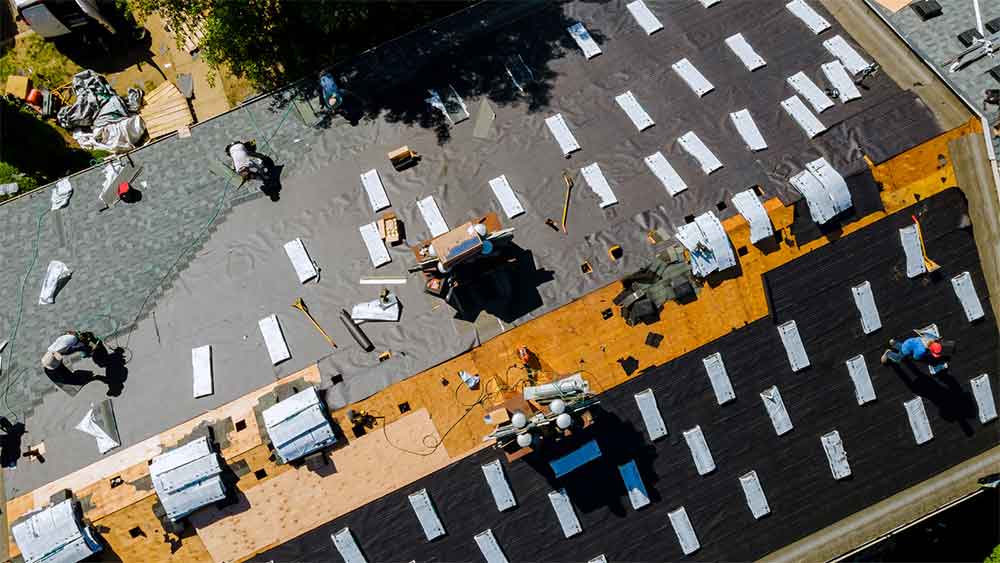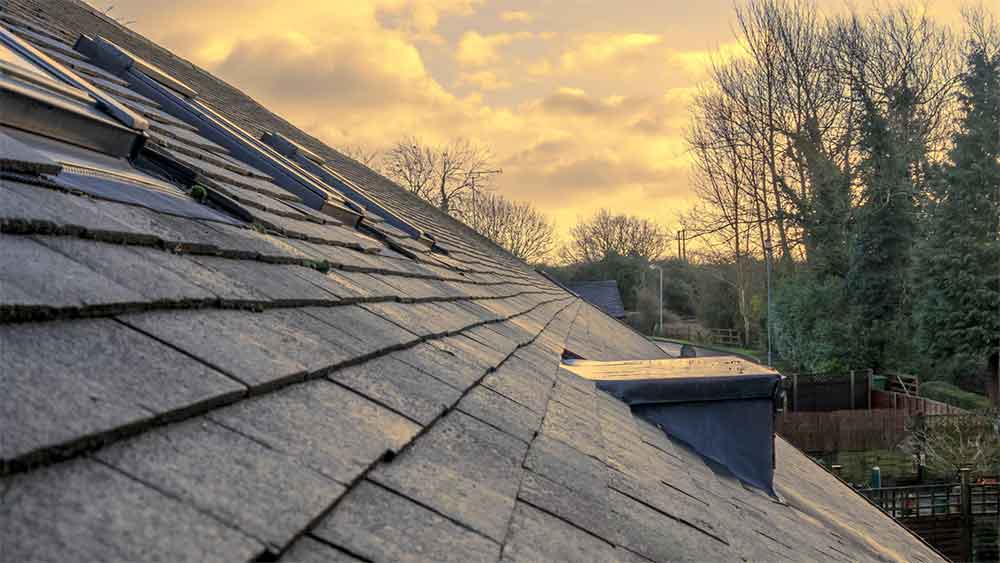A failing roof is more than just an inconvenience, it’s a costly problem. Leaks lead to water damage, mold growth, and weakened structural integrity. Rising energy bills become another issue when a worn-out roof no longer insulates appropriately. Constant repairs take time and money, and before you know it, you’re facing a full roof replacement far sooner than expected.
That’s why choosing the right roofing material that is long-lasting matters. A professional roof installation reduces the need for frequent repairs, improves energy efficiency, and extends your home’s protection lifespan.
To give you more clarity and context on the subject matter, this article will explore the best long-lasting roofing options, helping you make an informed investment that ensures security, efficiency, and long-term savings.
Understanding What Roof Materials Are
Roofing materials form the first line of defense against the elements. They protect a structure from rain, wind, snow, and extreme temperatures while contributing to energy efficiency and curb appeal. A well-chosen material prevents moisture damage, enhances insulation, and reduces long-term maintenance needs.
Different roofing materials vary in composition, durability, and cost. Traditional asphalt shingles are affordable but have a shorter lifespan. More durable options like metal, slate, and tile can last for decades, even a lifetime, with proper care.
But when all is said and done, note that the right choice depends on climate, budget, and long-term value, making material selection one of the most critical decisions for homeowners and builders.
The Critical Importance of Selecting Long-Lasting Roofing Materials
A roof is a significant investment, and choosing the right material impacts a home’s durability, maintenance costs, and overall value. Low-quality roofs may seem cost-effective initially, but they deteriorate faster, leading to expensive repairs and replacements. Selecting a long-lasting material ensures better protection, long-term savings, and fewer headaches down the road.
Choosing long-lasting materials brings tons of benefits, but its key importance lies in these factors:
- Lower Lifetime Costs: A durable roof lasts for decades, reducing the need for frequent replacements. Cheap materials wear out quickly, leading to higher expenses over time. A well-chosen roof saves thousands in maintenance and repairs. Investing in longevity ensures a cost-effective solution.
- Better Weather Resistance: Extreme weather can damage weak roofs, causing leaks and structural issues. Stronger materials withstand heavy rain, wind, and snow more effectively. Homes in harsh climates benefit from superior durability. Choosing the right material minimizes weather-related damage.
- Increased Home Value: Buyers prioritize homes with strong, low-maintenance roofs. A durable roof enhances curb appeal and makes a property more attractive. Many premium roofing materials increase resale value. Understanding how a new roof affects Orange County home appraisals and resale value helps you see the long-term financial benefits. A high-quality roof is a long-term investment in property appreciation.
- Enhanced Energy Efficiency: The right roofing material helps regulate indoor temperatures. Better insulation reduces heating and cooling costs throughout the year. Reflective coatings and naturally insulating materials improve energy efficiency. A reliable roof installation also ensures optimal performance and savings.
Choosing a long-lasting roofing material means fewer worries and more peace of mind. It’s not just about durability, it’s about making a smart financial and structural decision for the future.
The Most Long-Lasting Roof Materials on the Market
Not all roofing materials offer the same level of durability. Some last for just a few decades, while others can remain intact for over a century. Understanding the impact of Orange County microclimates on your roofing material selection helps ensure you choose materials suited for local conditions. Below are the strongest and most reliable options for homeowners looking for longevity:
Natural Slate: The Century-Plus Performer
Slate is one of the most durable roofing materials, often lasting over 100 years. Made from natural stone, it offers unmatched resistance to fire, water, and harsh weather conditions. Slate does not rot, warp, or suffer from insect damage, unlike many other materials. Once installed correctly, it requires little maintenance beyond occasional inspections.
While slate is incredibly long-lasting, it comes with a high initial cost. It is also one of the heaviest roofing options, which means a home may require additional structural support before installation. However, slate remains a top-tier choice for homeowners who prioritize durability, elegance, and long-term value.
Metal Roofing Systems: Superior Durability with Modern Appeal
Metal roofing provides exceptional strength and longevity, with lifespans ranging from 40 to 100 years, depending on the metal type. Materials like steel, aluminum, zinc, and copper offer superior resistance to rust, fire, and extreme weather conditions. Metal roofs are lightweight, reducing strain on a home’s structure, and they reflect heat, improving energy efficiency.
Although metal roofs are highly durable, they can be more expensive than traditional asphalt shingles. They may also produce more noise during heavy rain or hail. However, their minimal maintenance requirements and long-term savings make them a practical investment for homeowners who want a long-lasting and energy-efficient roof.
Clay and Concrete Tiles: Enduring Traditional Options
Clay and concrete tiles are widely known for their longevity, often lasting 50 to 100 years. These materials are naturally resistant to fire, rot, and insect damage, making them ideal for warm, dry climates. Clay tiles maintain color and structure over time, while concrete tiles offer a more cost-effective yet durable alternative.
Despite their durability, clay and concrete tiles are heavy, requiring a strong structural foundation for proper installation. They can also be brittle, meaning impact from heavy objects may cause cracks. However, with proper care and professional installation, they provide a classic and long-lasting roofing solution.
Advanced Synthetic and Composite Materials: Innovative Longevity Solutions
Modern synthetic and composite roofing materials replicate the appearance of traditional options like slate and wood while offering enhanced durability. These materials are engineered for impact resistance, fire protection, and longevity, often lasting 40 to 70 years. Many synthetic options are lightweight, making installation easier and reducing structural strain.
While synthetic roofing is a newer technology, advancements in material science have made it a strong contender for homeowners looking for durability without the high costs of natural slate or metal. With minimal maintenance and strong weather resistance, synthetic roofing provides a long-lasting, budget-friendly alternative to traditional materials.
For homeowners considering different shingle options, understanding architectural shingles vs traditional asphalt can help you make an informed decision about synthetic and composite alternatives.
Making the Right Roofing Investment for Your Specific Needs
Selecting the right roofing material is a long-term investment that impacts durability, maintenance, and cost efficiency. Homeowners should consider factors like climate, budget, and structural requirements. A well-chosen roof reduces long-term expenses, enhances property value, and provides reliable protection against the elements.
Whether choosing slate, metal, clay tiles, or advanced synthetic materials, durability should be a top priority. Investing in high-quality materials reduces the need for frequent roof repair services, improves energy efficiency, and provides lasting peace of mind.
For Orange County homeowners seeking expert guidance on material selection and installation, our areas served throughout the region ensure you receive local expertise tailored to your specific climate conditions. Choosing a material that aligns with practical needs and aesthetic preferences ensures a smart, long-lasting roofing solution.
When you’re ready to invest in a roof that will protect your home for decades to come, Truecraft Construction provides the expertise and quality materials needed to deliver exceptional results. Our team understands the unique challenges of Orange County’s climate and can help you select the perfect long-lasting roofing solution for your home.





